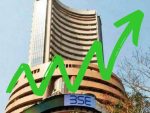
COVID-19 hits India’s gold-buying sentiment; Q3 demand drops by 30 pc: WGC
PTI, Oct 29, 2020, 12:50 PM IST

Mumbai: Gold demand in India dropped by 30 per cent during the July-September quarter to 86.6 tonnes compared to the same period last year due to COVID-19 related disruptions and ruling high prices, World Gold Council (WGC) said in a report.
The overall demand stood at 123.9 tonnes during the third quarter of 2019, according to WGC’s Q3 Gold Demand Trends report.
In terms of value, gold demand declined by 4 per cent during the quarter under review at Rs 39, 510 crore compared to Rs 41,300 crore in the same quarter of 2019.
India’s Q3 2020 gold demand fell by 30 per cent to 86.6 tonnes on the back of COVID-19 related disruptions, bleak consumer sentiment and high prices accompanied by volatility, WGC Managing Director, India, Somasundaram PR told PTI.
“This is, however, higher than Q2, which at 64 tonnes was a 70 per cent drop and the second lowest in our quarterly series. This has been partially due to easing of lock down and some low prices in August that provided a small window of buying opportunities for the discerning,” Somasundaram said.
Meanwhile, the total jewellery demand in India decreased by 48 per cent to 52.8 tonnes compared to 101.6 tonnes in the same quarter last year.
Similarly, in terms of value, jewellery demand fell 29 per cent to Rs 24,100 crore from Rs 33,850 crore in July-September 2019.
However, total investment demand during the third quarter surged by 52 per cent to 33.8 tonnes compared to 22.3 tonnes in the same period of 2019.
Similarly, in value terms, gold Investment demand was Rs 15,410 crore, up by 107 per cent from Rs 7,450 crore in the corresponding period of 2019.
“The third quarter tends to be relatively low generally due to seasonal factors like monsoons and inauspicious periods like Pitru-Paksh and Adhik Maas. Jewellery demand fell by 48 per cent as jewellery purchases did not have any support of festivals or weddings,” Somasundaram added.
Moreover, he pointed out that buying jewellery in the country is an experience and the restrictions including social distancing, wearing masks have kept consumer footfalls to the retail stores low.
On the other hand, he said gold’s safe haven attributes and an anticipation of price rise paved the way for an increase in investment demand for gold bars and coins by 51 per cent to 33.8 tonnes, he said.
“One interesting development during these months of lockdown has been the rapid rise in digital engagement with several tech initiatives by top jewellers to woo buyers. Digital platforms selling allocated gold through wallets also recorded sharp rise in volumes, along with significant activity in gold exchange-traded funds (ETFs) following a prolonged period of quiescence,” he pointed out.
Total gold recycled in India in the third quarter was 41.5 tonnes, up by 14 per cent compared to 36.5 tonnes in the same quarter of 2019.
“Due to higher prices, recycling increased by 14 per cent to 41.5 tonnes, though inventory rationalisation by jewellers and steep discounts in the market did impact full price recovery for sellers,” he observed.
Meanwhile, he said, imports resumed in anticipation of festival demand as supply chain-related restrictions were eased, growing from 9 tonnes in the previous quarter to 90.5 tonnes, he said.
“Looking ahead, we typically witness an upswing in gold demand in the fourth quarter on account of Dussehra, Dhanteras and other festivals coupled with a busy wedding season post-harvest.
“This year, a good monsoon notwithstanding, price and COVID-19 shadow will affect sentiment, though we can reasonably expect at least a part of the pent-up demand to surface,” Somasundaram said.
As weddings and festivities become low-key affairs, savings on other spends could be channelised into gold, he added.
A sense of cautious optimism has returned among the trade stemming from the fact that the society is gradually learning to live with COVID-19, he said.
“However as we are still reeling under the impact of the pandemic and fear of second wave of infections without clear sight of many variables on consumer behaviour, volatile prices or length of the disruptions, we will not be able to quantify the impact on the full year gold demand in India other than to say that demand could be multi-year low,” he added.
But, post COVID-19 demand is likely to surge like post-2009, when demand was 642 tonnes and rose sharply to 1,002 tonne in 2010 and continued to be high in 2011 and 2012, he added.
Udayavani is now on Telegram. Click here to join our channel and stay updated with the latest news.
Top News
Related Articles More

Stock markets stage strong rebound after 4 days of slump, Sensex rallies 599 pts

PHF Leasing Limited raises $10 Mn through a mix of equity and debt

CCPA asks FSSAI to probe claim of Nestle adding sugar to baby products

Markets tank in early trade as Middle East tensions flare-up

Tesla shares tumble below $150 per share, giving up all gains made over the past year
MUST WATCH
Latest Additions

Injuries don’t define you: Mohammed Shami shares rehab update

Shivakumar desperately wants to become CM, says K’taka BJP chief Vijayendra

Scribe throws lapel microphone towards Sharad Pawar in Baramati; cops give clean chit

India delivers first batch of BrahMos missiles to Philippines

Air India cancels Dubai flights due to operational disruptions

























